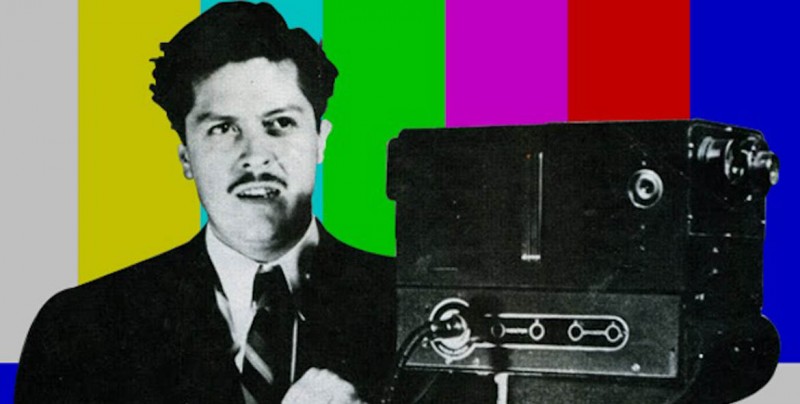At the age of 12 he built his first amateur radio transmitter with pieces of broken toys and at 15 his first TV camera. A whole life has passed since a Mexican became the best known scientist of the time.
(Excélsior).- His knowledge transcended so much that Channel 5 carries the acronym XHGC, in honor of González Camarena, his initials were engraved forever.
Social networks are celebrating the event today, six decades later. But here we tell you what happened.
On January 21, 1963, the first color broadcast in the history of Mexican television took place on Channel 5, founded by Guillermo González Camarena, inventor of the trichromatic sequential field system.
The series Paraíso infantil was chosen as the first program to be broadcast under this innovative procedure.
Guillermo González Camarena, a Mexican engineer known for being the inventor of color television, was born in Guadalajara, Mexico in 1917 and studied at the National School of Engineers of the National Autonomous University of Mexico (UNAM). During his career, he worked for several telecommunications companies in Mexico and the United States before establishing his own company, Guillermo González Camarena S.A. de C.V.
In 1940, Camarena developed his first color television system, known as the “Color Television System Number 1“, which was patented in 1942. This system used three color lenses to separate the television signal into red, green and blue, which allowed the transmission of color images.
Despite its innovation, Camarena’s system was not adopted commercially due to competition from other color television systems under development at the time, including the NTSC standard, which was adopted as the official color television standard in the United States and Mexico.
Still, Camarena’s work was recognized by the industry and he was honored with several awards and recognitions, including Mexico’s Medal of Technological Merit and Mexico’s Order of the Aztec Eagle. His legacy continues to be remembered as one of the pioneers in the history of television.
González Camarena built his first television system in 1932, observing that color images would look much better. So he spent the next few years working on his trichromatic system, using parts from decomposed sets.
In 1940 he obtained -both in Mexico and in the United States- the patent for this project with the number 40235, kept in the Archivo General de la Nación under the title Registro de un adaptador cromoscópico para aparatos de televisión, which contains the detailed description of the model, accompanied by three plates with seven allusive drawings.
However, it was not called color television, since it was determined that the invention was an improvement over the previously patented black and white television sets. His patriotic sense led him to reject an important investment proposed by American universities, as he wanted his discovery to be developed in his country of origin, making Mexico the first nation in the world to enjoy color television.

In 1947 the Secretariat of Communications and Public Works authorized him to make experimental transmissions on the air, with the permit XE1GC (the last acronym in reference to his surname). Of course, all the equipment had been designed and built by himself. However, when he did not see concrete results to obtain a television concession, he decided to send a letter to the then president Miguel Alemán Valdés, explaining the reasons why he should obtain the required license, to put his inventions at the service of the Mexican people.
This system was based on the black and white of the time and there was no international standard, so the price of these devices was unaffordable for many. Aware that television should be enjoyed by the general public, in 1963 he created his Simplified Bicolor System, which, as its name suggests, was simpler and more affordable.
Always committed to education, Camarena tried to bring literacy to various parts of the country through his system, so he promoted a project together with the Ministry of Public Education (SEP), in which classes were taught through color television, which eventually consolidated as the Telesecundaria Education System.
Television as a means of communication had already meant an important change in the way of life that Mexican society was used to in the 20th century. In a short period of time, it was taking away the prominence of radio stations and with the discovery developed by the scientist from Guadalajara, he somehow managed to make color images more credible what the screen projected to the viewers, thus achieving massification.
As restless as he was multifaceted, González Camarena will always be remembered as the man responsible for introducing, literally, the rainbow in the television with which generations of Mexicans grew up.
San Miguel Times
Newsroom

